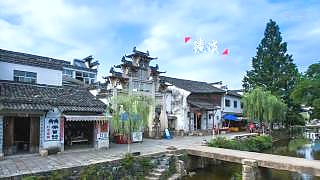
|
With China Street View ...
With Expat Natt ...
Travel Guide to NingBo, ZheJiang Province
Introduction
Ningbo, a coastal city in Zhejiang Province, is a blend of rich history and modern development. As a major port city, it offers scenic waterfronts, historic temples, and cultural heritage sites.
Top Attractions
Tianyi Pavilion
One of the oldest private libraries in China, Tianyi Pavilion is a must-visit for history lovers. The ancient books and classical gardens make it a fascinating cultural destination.
Baoguo Temple
A well-preserved wooden structure dating back to the Tang Dynasty, Baoguo Temple showcases ancient Chinese architectural brilliance.
Ningbo Old Bund
Located along the Yong River, the Old Bund is an area filled with European-style buildings, bars, and restaurants, offering a charming riverside experience.
Dongqian Lake
The largest freshwater lake in Zhejiang, Dongqian Lake is perfect for boating, cycling, and exploring ancient sites like the Dongqian Lake Stone Carvings.
Asoka Temple
One of China’s oldest Buddhist temples, Asoka Temple is famous for housing a sacred relic of Buddha, making it an important pilgrimage site.
Local Cuisine
Ningbo Seafood
As a coastal city, Ningbo is known for its fresh seafood dishes such as steamed crabs, grilled fish, and seafood dumplings.
Ningbo Tangyuan
A traditional dessert, these glutinous rice balls are filled with sweet sesame paste and often served in a warm soup.
Yellow Croaker Soup
A flavorful fish soup made with fresh yellow croaker, a specialty of Ningbo.
Best Time to Visit
Spring (March to May) and autumn (September to November) offer the best weather for sightseeing and outdoor activities.
Transportation
Ningbo is well-connected by air, train, and road. The Ningbo Lishe International Airport provides flights to major cities, while high-speed trains link Ningbo to Shanghai and Hangzhou.
Accommodation
From luxury hotels like the Shangri-La Ningbo to budget-friendly guesthouses, the city offers a range of accommodation options to suit all travelers.
Conclusion
Ningbo is a captivating city that seamlessly blends ancient history with modernity. Whether you're exploring its temples, enjoying fresh seafood, or strolling along the Old Bund, there’s something for everyone in this coastal gem.
|
 Outdoor exercising in China
Outdoor exercising in China



